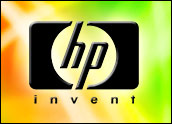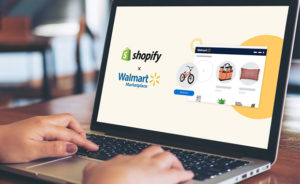
HP said Wednesday that it has agreed to buy the ailing Palm at US$5.70 a share, for a total of about $1.2 billion.
The acquisition is expected to close during HP’s fiscal 2010 third quarter, which ends July 31.
Both companies may benefit from the move — but did HP pay too much? And what will happen to its arrangements with long-time partner Microsoft?
A Friend in Need
Palm has been on the block since it announced dismal Q3 2010 results in March. The quarter saw it rack up rack up $22 million in losses for shareholders, following a loss of $13.7 million the previous quarter.
The company sold fewer than half the 960,000 smartphones it shipped during Q3, 2010. This led CEO Jon Rubinstein to say its underperformance had been “very disappointing.”
Rubinstein did, however, express confidence in Palm’s potential, and the company’s purchase by HP appears to have borne him out.
HP plans to pump money into Palm and leverage it to crack the mobile device market, which is highly lucrative.
“The connected mobile device market is large, profitable and growing,” Todd Bradley, executive vice president of HP’s personal systems group, said via a webcast announcing the deal. “We believe the acquisition of Palm is a transformational deal in the connected mobility market that will open up the opportunity for further global growth.”
Complementary or Codependent?
How good will the deal really be for HP? Potential buyers HTC and Huawei turned Palm down after it approached them, and a possible deal with Lenovo appeared to be hanging fire. Did those companies see problems HP didn’t?
Possibly not. HP’s Todd acknowledged the company will have to fork out lots of money to make Palm work, but said it’s prepared for that.
“We intend to invest heavily in product development and to market aggressively,” Todd remarked.
Palm itself is spending about $190 million a year on R&D alone, Rod Hall, an analyst at JPMorgan Chase, said during the Web conference.
“If I were to compare this purchase to a real estate deal, Palm is definitely a fixer-upper,” Charles King, principal analyst at Pund-IT, told the E-Commerce Times.
However, there could be a substantial upside to the purchase. Palm has a dedicated base of business users who will leap at the chance to continue working with its devices, King pointed out.
Searching for a Pot of Gold
That base could contribute substantially to HP’s bottom line if it can make Palm work.
“The smartphone market is worth $100 billion and is growing over 20 percent,” HP’s Todd said. “Palm’s world-class technology, coupled with HP’s scale and financial strength, will accelerate our strategy in the mobile connected market.”
So just what is this mobile connected market? Apparently it ranges across a broad spectrum — from smartphones to netbooks and laptops — and incorporates the cloud somewhere along the way.
“With Palm, HP acquires a strong operating system to deploy a unique customer experience, an app store with over 2,000 apps and growing, and a platform to deliver mobile cloud-based services,” Todd said. Those cloud-based services include over-the-air updates, online backup and messaging services.
“I think it’s a great move for HP,” Maribel Lopez, principal analyst and founder of Lopez Research, told the E-Commerce Times. “It’s seemed odd that HP would be in smartbooks and laptops and not in mobile devices, especially with Dell coming out with the Streak.”
The Streak is a mini-tablet from Dell that will run Android.
Getting into the smartphone market may open up the mobile market for HP, Lopez said. “The smartphone market is one of the directors of sales of other mobile devices,” she pointed out. “You can’t afford to miss out on it.”
Lord of the Apps?
One of the main challenges HP will have to address once the Palm deal goes through is how to attract app developers.
The real money is to be made in apps, and Apple’s iTunes App Store is the 800-pound gorilla in this space.
“The question now is, can HP get the developer community to go for Palm?” Lopez asked.
HP’s plans in this respect are not yet clear. “We’re not content creators, we’re access providers,” Todd said.
That might work if Palm customers can access apps from the carriers. There should be plenty of such apps — 24 wireless carriers around the world, supported by major smartphone manufacturers, have teamed up to build an open app platform through the Wholesale Applications Community.
HP has an advantage here — it provides the infrastructure for eight of the top 10 carriers in the world.
“We’ll focus on leveraging several large carriers instead of large numbers of small carriers, and we think that will provide a very significant growth platform for this product as we move forward,” Todd said.
What About Microsoft?
HP has been offering smartphones and personal digital assistants (PDAs) under the iPaq brand for some years. These run Windows Mobile. Will HP now abandon Microsoft in favor of its own devices running Palm’s webOS?
No, HP’s Todd said. “We intend to continue being a strategic partner for Microsoft; they’re a huge part of our business.”
On the other hand, “we believe there’s a unique opportunity with Palm to create a unique HP experience across these products,” he said almost immediately afterward.
Perhaps HP is wise to make its own plans, Carl Howe, director of anywhere research at the Yankee Group, told the E-Commerce Times.
“HP’s been committed to Windows Mobile for the last decade, but given the declining trend on that operating system, it probably recognized it needed a backup plan in order to remain competitive in the smartphone marketplace,” Howe pointed out.
“Hence the Palm acquisition,” he said. “It keeps HP in the game, which sticking only with Windows Mobile was unlikely to do.”
HP shares fell 38 cents in after-hours trading, triggering speculation that perhaps other potential suitors for Palm might come forward.






















































Social Media
See all Social Media